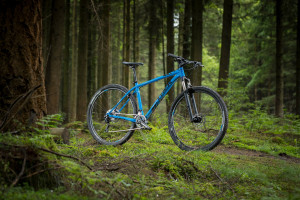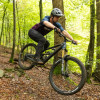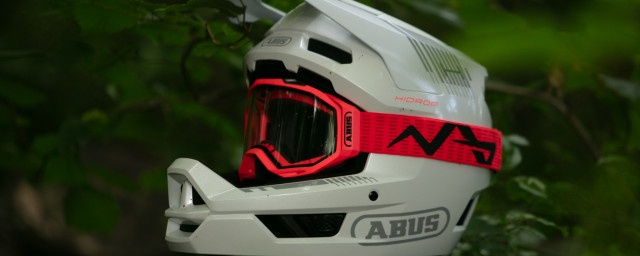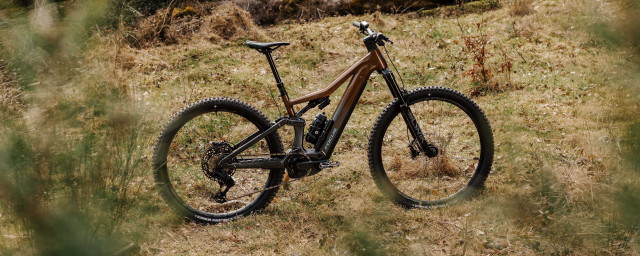The Roost is Starling Cycles’ hardtail mountain bike that’s been designed to offer pure, unadulterated fun and longevity, and it does so in spades. It's a modern trail hardtail that squeezes every inch of fun out of any trail with an exhilarating and rowdy but confident and refined ride feel. This easily makes it one of the best hardtail mountain bikes on the market. However, its slim size range limits its accessability and its stainless frame ups the asking price compared to its regular steel-built peers.
- Is big travel necessary for UK trails?
- Merida Big.Trail 700 review
- Five reasons why you should have a hardtail
Starling Cycles Roost - Technical details
Starling’s Roost is unarguably a trail hardtail but although it’s designed to work at its best with a 140mm fork, it can run anything from 120mm up to 160mm of travel. So it can be adapted to become a more racy cross-country/marathon build or a heavier-hitting, enduro-focused hardtail if either takes your fancy.
The brand’s decision to shape the Roost around a 140mm fork is one that I certainly appreciate. As hardtails push through their travel, the geometry steepens, and if it’s equipped with a long travel fork that can dramatically shift weight forwards during big compressions - not ideal. For the Roost, it’s a case of giving it enough travel to be capable while keeping it minimal enough to minimise any negative effects of a steeper geometry under compression.
And speaking of geometry, Starling hasn’t gone crazy like some other smaller frame builders and given the Roost a mental head angle and the longest front centre ever. Instead, the brand has remained reserved whilst gracing the bike with up-to-date trail-orientated figures. Frames get a 64-degree head angle, a 76-degree seat tube angle, and a short, 430mm chainstay. A large frame then benefits from a 475mm reach and a 1,242mm wheelbase. Even though many of these measurements are pretty common these days, the head angle is pretty slack, albeit not as slack as more aggro bikes, and that chainstay is short but fairly balanced for a 650b rear end on a hardtail.
We're told Starling gets a tonne of questions asking for a raw finished frame because it looks so great - but the brand’s material of choice, steel, corrodes when left uncoated, or unfinished. And even when coated, deeper scratches allow moisture ingress. So to answer those calls, Starling has chosen to use stainless steel for the Roost as it’s resistant to corrosion and it offers an almost identical ride character to regular steel while looking excellent. Another key benefit is that it can rebrushed if scratched, making for a frame with some serious longevity behind it and while spendier than regular steel, it’s cheaper than titanium while looking equally as stunning.
As for frame features, it’s rather simple with tidy external cable routing that runs along the top of the down tube with the seat post’s cable entering the seat tube. There are mounts for a single bottle cage leaving the seat tube mostly uninterrupted, apart from a clearance-enhancing kink. While this eliminates potential space for another bottle cage, it allows for deep seat post insertion, meaning that the Roost can be assembled with long travel droppers, which I would much rather.
Elsewhere, there’s a threaded bottom bracket and clearance for up to a 2.8in tyres thanks to a tubular chainstay yoke which has drawn its inspiration from Starling’s full sussers. This adds strength and keeps the chainstay short, and I quite like the stylistic nod towards the brand’s other bikes.
Rounding off the bike, it rolls on a mullet wheelset (650b rear, 29in front) and can accommodate up to 200mm brake rotors. As for weight, the bike on test tips the scale at 14.10kg but it is built with a coil fork and tyre inserts which add to that figure.
Starling Cycles Roost - Componentry
The Roost we’ve got on test is draped with some rather cool kit, including an Öhlins RXF36 coil fork which damps 140mm of suspension. There’s then a Shimano XT 12-speed drivetrain, turned by a unique but beautiful Middleburn crankset.
This particular build rolls on a set of fancy custom wheels, complete with CushCore and a pair of Michelin tyres. There’s also a BikeYoke Divine dropper with 185mm of travel and Magura takes care of braking duties thanks to a set of MT7 four-piston brakes at both ends. Funn provides the finishing kit, although I swapped out the saddle and grips just to suit my own tastes.
Altogether, this build will cost around £4,200. However, like with the MegaMurmur we tested a couple of months ago, the Roost is available as a frame only, or with a custom build with components from Starling’s stock. With that, customers can choose kit from Öhlins, RockShox, Cane Creek, Magura, Hope, Middleburn, and more. This means that you could build up a Roost to suit a range of budgets
There’s also a Hope special build that comes with a full Hope finishing kit and a Cane Creek Helm fork.
Starling Cycles Roost - Performance
As mentioned before, the Roost has been crafted to be fun, above anything else, and it absolutely delivers. But it does this so well because it’s not a bike that can be easily pigeonholed as it squeezes most out of any trail and it’s no slouch when things get more demanding thanks to its very well-considered geometry and the hint of forgiveness that comes as a result of the steel build.
The heart of the Roost’s fun-loving character comes purely as a result of Starling’s very wise geometry decisions. Where many smaller frame builders are going berserk with their hardtail geometries, Starling has remained comparatively reserved, although by no means conservative, and it’s a move that seriously pays off.
Even though the chainstay sits towards the shorter end of the scale the seat tube angle is steep enough to push rider weight towards the centre of the bike, which when climbing, keeps both wheels planted to the ground. Because of that, it’s an impressive climber that allows the rider simply to focus on pedal input, rather than wrestle with a floaty front end. The combination of the chainstay and seat tube angle then puts just enough weight over the rear wheel in order to maintain traction which is important given the mullet setup, and the lack of rear squish. Breaks in rear wheel grip have been minimal, even when scaling especially slippery surfaces.
Starling has hit a great middle-ground with the seat tube angle in that it’s not so steep that it affects the bike’s ride when riding through mellower trails with little to no gradient. Too steep, and a bike can feel nervous when rolling over lumpy stuff. On the Roost, rider weight is rearward enough of the bottom bracket to help the bike drive through flat tech while keeping the front end of the bike weighted, responsive to input, and absolutely manageable, despite the slack head tube. But it’s steep enough to keep the bike behaved under saddled pedalling efforts.
On the pedals, the Roost is spritely and by no means lethargic making any uphill effort, or traverse an efficient pleasure. Because it’s not super aggressive, or cross country, there’s nowhere where the bike makes any compromise in the way it rides and how you ride it. Of course, it’s not as light as an XC hardtail and it may not be as outright capable as the more ridiculous hardcore hardtails. Still, because of that, it’s a rewarding experience through a wide gamut of trails, and this bike has tonnes of headroom in terms of its capability.
And capable this bike certainly is. It goes without saying but it is a hardtail, so it doesn’t hold your hand and things get pretty rowdy pretty quickly because the front of the bike rustles up a comforting level of stability. The longer front end makes the bike quite a stable machine and in many cases, I’ve felt like I’ve gotten away with murder, as I’ve hit stretches of filth with absolutely no grip but with full confidence thanks to the stability its wheelbase cooks up.
It lulls the rider into an almost false sense of security, as it encourages fun games of brake chicken, egging you on to hold off the brakes until as late as possible. Thanks to its lengthy front centre, It can be trusted when pushed hard and where the bike is pushed, it shines as all of its features amalgamate into one. It’s stable and fast but it’ll still throw a surprise lapse of grip that’s easy to catch thanks to the long front centre, and the fact that the rear wheel is so close to the reasonably low bottom bracket.
The mullet wheel size is a feature that surprised me. Generally, I’m not the happiest with mullet wheels as I prefer the consistency of feel that a full 29in setup affords and for a hardtail, that’s valuable but on the Roost, there’s little to complain about. When used with its short seat tube, it offers loads of space to move around the bike, while adding the playful character the wheel size is known for.
Despite the fact it’s a mixed-wheel setup, the whole bike takes on a mullet persona as it’s very much a case of business up front, party out back. Where the front makes the bike hugely capable, the little rear wheel and short chainstay are a reminder that it doesn’t take things seriously, regardless of the shenanigans the slack head angle, and longer front centre encourage.
As a result of the long front centre and short rear end, the Roost is a pleasure to corner, as its marriage of a low bottom bracket and its head angle results in a bike happily settling into a turn, and holding its line with tenacity. The short chainstay and little rear wheel add an eagerness to the ride, where it’s keen to slink into its lean and more than happy to change direction suddenly, but confidently.
Together, the 650b rear wheel and somewhat short chainstay make for a small rear end it feels like you can steer with the rear wheel by putting weighting it mid-corner. It’s direct and predictable because it’s basically underneath the rider. It feels like the bike pivots around the bottom bracket which is a key reason as to why this bike is so fun in the corners. Of course, the BB is low too.
However, despite there being little to complain about, the smaller rear wheel can hang up more on larger square edges. This is a general compromise of that wheel size, so it’s absolutely to be expected but the lack of rear suspension heightens the feedback. That said, I could probably pick better lines.
Unlike bikes like the Stif Squatch, the Roost doesn't get any fancy flat stays included to boost compliance. Regardless, the smidgeon of compliance that is present in its frame adds to that capability headroom that I mentioned before. It’s not quite as forgiving as the Squatch, for example, but there’s still a clear level of give that dampens trail chatter and the initial jolt of square-edged hits. It also lands jumps and drops as smooth as butter.
Of course, the frame is a stunner. Although it’s not built by the guys in Bristol (instead it’s welded in Taiwan), it’s clear that they wouldn’t offer a frame that didn’t meet or exceed their standards. Each weld is masterfully executed and there are some seriously beautiful joins present, especially around the seat tube/seat stay junction. Stainless steel’s ability to be rebrushed means that if you were to buy one of these, you could have a near immaculate-looking bike for many, many years. I’m a big fan of the subtle sand-blasted logos too.
Starling Cycles Roost - Value and verdict
Starling’s decision to build the Roost using stainless steel does affect its price, clearly marking it as a premium product and making it a fair chunk pricier than the Stif Squatch (£650) and more than Bird’s Forge (£840), both of which are built around 4130 Chromo steel tubing. Neither are mullet bikes but both get geometries that aren’t terribly different from the Roost’s. But both aren’t stainless which is the key string to the Roost’s bow.
While pricier than many steel frames, you’re investing in serious longevity and a raw frame that’ll look good throughout its lengthy lifetime. It’s got a similar look to titanium too. I can’t promise that this frame rides the same as a titanium one and it won’t be as light, but it is a heft cheaper. For example, Stanton's Switch9er Ti frame will set you back £2,100.
Starling Cycles’ Roost is a bike that exudes style and function. It’s bonded with high-quality welds, sleek joins and subtle logos leaving the bike with an aesthetic that blends anonymity with Starling’s signature motifs. And it rides as exceptionally as it looks, rewarding the rider with all manners of thrills on every trail, while welcoming acts of high-speed delinquency making it an infallible hardtail that’s almost impossible not to like.




















Add comment